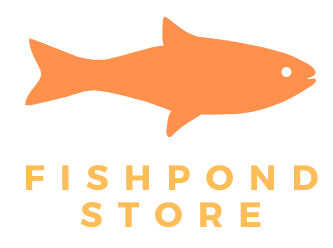Have you ever wondered what is the deal pond ecosystem and what makes it thrive? Today, we will explore the components and characteristics of an ideal pond ecosystem. From the diversity of aquatic plants and animals to the perfect balance of nutrients and oxygen levels, we will uncover the key factors that contribute to a healthy and sustainable pond ecosystem.
So, if you’re eager to learn how nature creates its own perfect oasis, join us as we dive into the fascinating world of the ideal pond ecosystem.
Definition of a Pond Ecosystem
Understanding the Concept
A pond ecosystem is a dynamic and interconnected community of plants, animals, microorganisms, and their physical environment, existing within a contained body of water known as a pond. It is a delicate balance of various organisms and abiotic factors interacting with each other, creating a unique and self-sustaining ecosystem.
Components of a Pond Ecosystem
A pond ecosystem comprises several key components that work together to maintain its functioning. These components include aquatic plants, algae, phytoplankton, zooplankton, fish, amphibians, reptiles, insects, bacteria, and other microorganisms. Each of these organisms has a specific role in the ecosystem, contributing to the overall balance and health of the pond ecosystem.
Importance of a Healthy Pond Ecosystem
Biodiversity Conservation
One of the primary reasons for the importance of a healthy pond ecosystem is biodiversity conservation. Ponds support a rich array of plant and animal species, many of which are unique to these freshwater habitats. By preserving and maintaining the health of pond ecosystems, we can protect and conserve diverse species, contributing to the overall biodiversity of our planet.
Water Filtration and Purification
Pond ecosystems play a vital role in water filtration and purification. As water flows through a pond, the plants and microorganisms within the ecosystem help in removing pollutants, excess nutrients, and organic matter from the water. This natural process helps in maintaining clean and healthy water for both wildlife and humans.
Nutrient Cycling
Pond ecosystems are efficient at nutrient cycling. Nutrients from decaying organic matter or external sources are taken up by plants and algae, which are then consumed by herbivores and passed on to higher trophic levels. When organisms die or excrete waste, these nutrients are returned to the ecosystem. This cycle ensures the availability of essential nutrients and helps sustain the overall productivity of the pond ecosystem.
Carbon Sequestration
Pond ecosystems contribute to carbon sequestration, the process of capturing and storing carbon dioxide from the atmosphere. Aquatic plants, such as submerged plants and phytoplankton, absorb carbon dioxide during photosynthesis, incorporating it into their tissues. When these plants die and sink to the bottom of the pond, the carbon they contain is effectively stored in the sediment, helping to mitigate climate change.
Recreation and Aesthetic Value
Pond ecosystems provide recreational opportunities and have aesthetic value for people. They offer tranquil settings for fishing, boating, and other water-based activities, allowing individuals to connect with nature and relax. Additionally, the beauty of a well-maintained pond, with its diverse plant life, vibrant colors, and charismatic wildlife, contributes to the aesthetic appeal of any landscape.
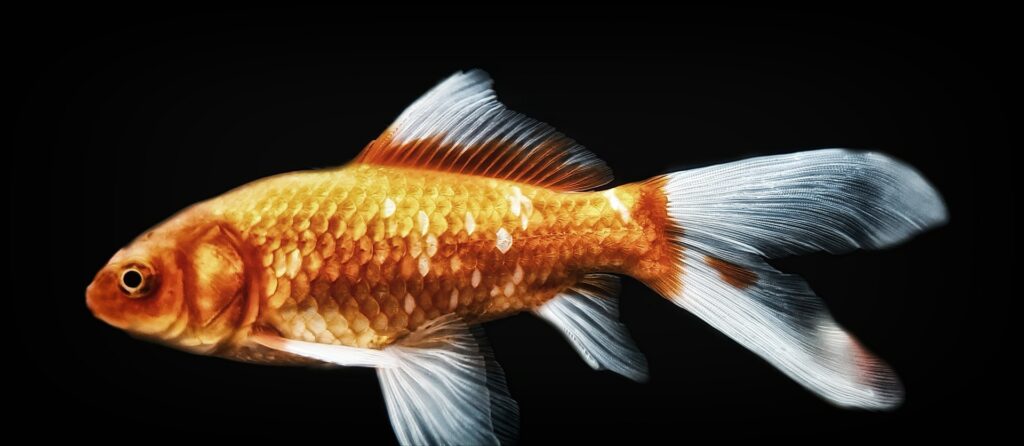
Characteristics of an Ideal Pond Ecosystem
Balanced Food Chain
An ideal pond ecosystem is characterized by a balanced food chain or food web. It consists of producers, such as plants and algae, which are consumed by herbivores, which in turn are preyed upon by carnivores. This balance ensures that no species becomes overly dominant or scarce, maintaining the stability and health of the ecosystem.
Sustainable Population Levels
Population levels within a pond ecosystem should be sustainable, meaning they are neither too high nor too low. Overpopulation can lead to competition for resources, overcrowding, and ecological imbalances, while underpopulation can disrupt the functioning of the ecosystem. Maintaining a healthy balance ensures that each species can thrive while contributing to the overall harmony of the ecosystem.
Optimal Water Quality
An ideal pond ecosystem has optimal water quality, with balanced pH levels, dissolved oxygen content, and temperature. Clear, clean water free from excessive pollutants, sediment, and harmful chemicals is crucial for the survival and health of the organisms within the ecosystem. Monitoring and maintaining water quality parameters are essential for the long-term well-being of the pond ecosystem.
Presence of Native Species
Native species are an integral part of an ideal pond ecosystem. They have evolved and adapted to the local conditions of the ecosystem, forming intricate ecological relationships with other species. Native species typically have a lower risk of becoming invasive and often provide critical ecosystem services. Their presence contributes to the overall stability and biodiversity of the pond ecosystem.
Adequate Vegetation
Vegetation, including both submerged and emergent plants, plays a crucial role in an ideal pond ecosystem. Plants provide oxygen, food, and shelter for various organisms. They also help in water filtration, nutrient absorption, and stabilizing the pond banks, preventing erosion. Adequate vegetation cover ensures a balanced ecosystem and supports the survival of many species.
Abundant Oxygen Levels
Sufficient oxygen levels are essential for the survival of aquatic organisms in a pond ecosystem. Plants, algae, and photosynthetic bacteria produce oxygen through photosynthesis, while aquatic animals rely on dissolved oxygen in the water for respiration. Lack of oxygen can lead to fish kills and the decline of other oxygen-dependent species. Maintaining abundant oxygen levels is crucial for the overall health and functioning of the ecosystem.
Stable Water Temperature
Water temperature directly affects the metabolic rates, reproduction, and overall health of the organisms within a pond ecosystem. While some species can tolerate a wide range of temperatures, drastic fluctuations or extremes can negatively impact populations. An ideal pond ecosystem maintains a relatively stable water temperature, providing a suitable habitat for the organisms it supports.
Limited External Disturbances
An ideal pond ecosystem is characterized by limited external disturbances. These disturbances can include pollution, excessive sedimentation, invasive species introductions, and destructive human activities. Minimizing these disturbances helps maintain the natural balance, resilience, and biodiversity of the pond ecosystem.
Proper Nutrient Balance
An optimal nutrient balance is critical for the health of a pond ecosystem. Too many nutrients, such as nitrogen and phosphorus from fertilizers or agricultural runoff, can lead to harmful algal blooms, oxygen depletion, and imbalances in the ecosystem. Conversely, nutrient deficiencies can limit the growth and productivity of organisms within the ecosystem. Maintaining a proper nutrient balance ensures the sustained health and productivity of the pond ecosystem.
Efficient Nutrient Cycling
Efficient nutrient cycling is a key characteristic of an ideal pond ecosystem. As mentioned earlier, nutrient cycling involves the uptake, utilization, and cycling of nutrients through the various trophic levels within the ecosystem. The effective recycling and redistribution of nutrients ensure their availability to support the growth and development of organisms. A well-balanced pond ecosystem demonstrates efficient nutrient cycling.
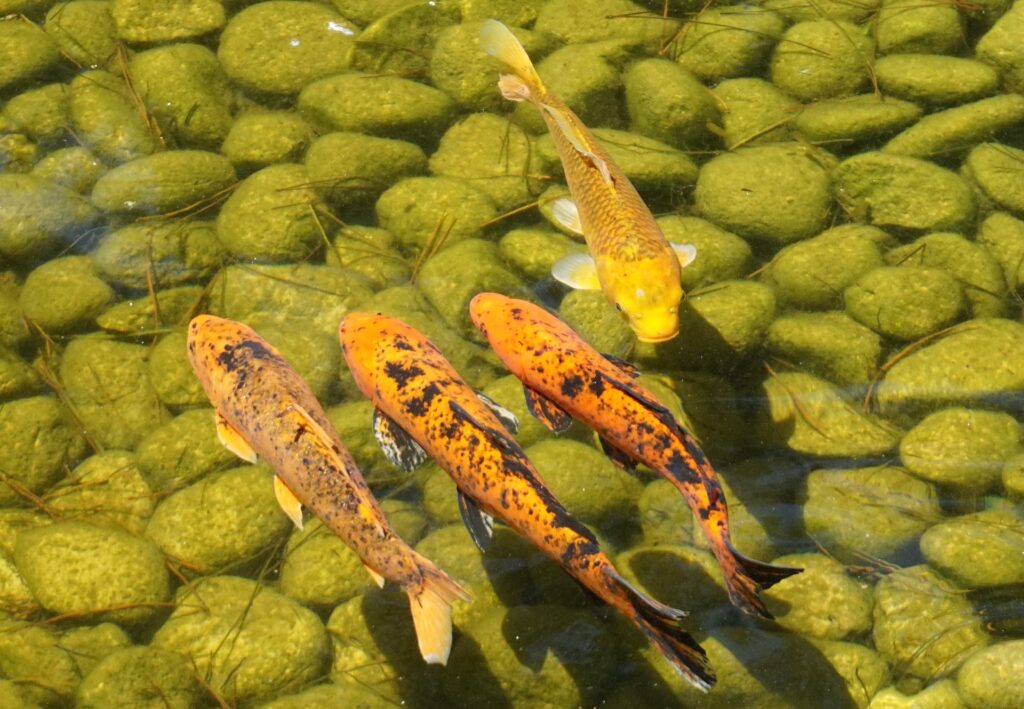
Factors Affecting Pond Ecosystems
Climate and Weather Patterns
Climate and weather patterns significantly influence pond ecosystems. Temperature, precipitation, seasonal variations, and sunlight availability all impact the growth, reproduction, and behavior of organisms within the ecosystem. Understanding the local climate and weather patterns is crucial when designing, managing, and maintaining a pond ecosystem.
Geographical Location
The geographical location of a pond ecosystem plays a vital role in determining the species composition and ecological dynamics. Ponds located in different regions or habitats will have unique characteristics and support different flora and fauna. Factors such as latitude, altitude, surrounding vegetation, and geological features all contribute to the uniqueness of pond ecosystems.
Water Source and Circulation
The source of water for a pond ecosystem affects its quality, nutrient composition, and overall suitability for different organisms. Ponds fed by natural springs or groundwater may have different characteristics compared to those fed by rainwater or surface runoff. Additionally, the circulation of water within a pond influences oxygen levels, temperature distribution, and nutrient mixing, all of which impact the ecosystem dynamics.
Depth and Surface Area
The depth and surface area of a pond ecosystem have significant implications for its ecological functioning. Shallow ponds with large surface areas may experience greater temperature fluctuations and have different oxygen dynamics compared to deeper ponds. Additionally, the available habitat space and sunlight penetration vary based on depth, influencing species composition and ecological interactions within the pond ecosystem.
Substrate Composition
The composition of the substrate, or the material at the bottom of the pond, affects the types of plants that can grow and the availability of nutrients. Sandy or rocky substrates may support different vegetation compared to silty or mucky substrates. The substrate also influences the water quality and habitat structure within the pond ecosystem.
Presence of Aquatic Plants
Aquatic plants are crucial components of pond ecosystems. The presence or absence of different plant species affects nutrient cycling, water clarity, habitat availability, and oxygen production. The diversity, density, and distribution of aquatic plants influence the overall structure and ecological functions of the pond ecosystem.
Pollutant and Chemical Inputs
Pollutants and chemical inputs can have detrimental effects on pond ecosystems. Pesticides, fertilizers, industrial waste, and other chemical pollutants can contaminate the water, killing or harming organisms within the ecosystem. Careful management of pollutant inputs and the promotion of sustainable practices are essential for preserving the health and integrity of pond ecosystems.
Human Interference and Management
Human interference and management practices can significantly impact pond ecosystems. Habitat alteration, introduction of non-native species, overfishing, excessive nutrient inputs, and improper waste management are a few examples of how human activities can disrupt the natural balance of a pond ecosystem. Responsible management practices that prioritize the conservation and sustainability of the ecosystem are crucial for its long-term health.
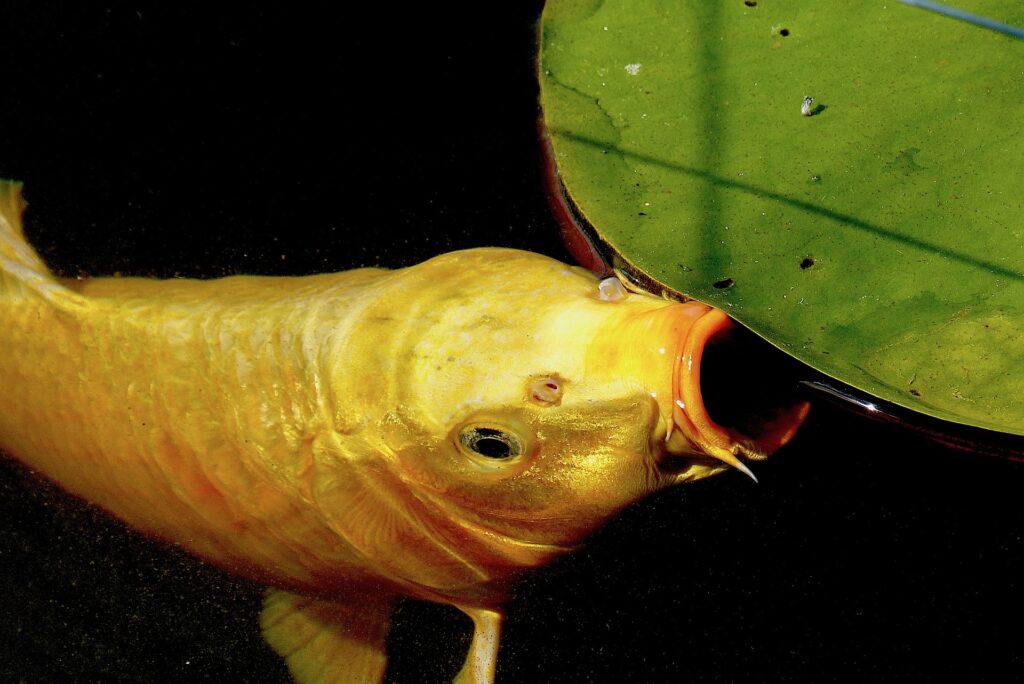
Building and Maintaining an Ideal Pond Ecosystem
Selecting the Right Location
When building or establishing a pond ecosystem, selecting the right location is crucial. Consider factors such as sunlight availability, accessibility, local climate, and proximity to other ecosystems. The chosen location should provide adequate space, suitable water sources, and a conducive environment for the establishment of a healthy pond ecosystem.
Designing Size and Shape
The size and shape of a pond can influence its ecological functioning. Larger ponds generally support greater biodiversity and provide a wider range of habitats for various species. However, even small ponds can be valuable if designed with consideration for depth variations, shoreline features, and habitat structures. Designing a pond with diverse features can enhance its ecological value and support a wider range of organisms.
Water Source and Circulation Planning
Planning for a suitable water source and circulation system is vital for maintaining a healthy pond ecosystem. Incorporating natural water sources, such as rainfall or groundwater, can help ensure a consistent water supply. Additionally, implementing circulation systems, such as pumps or fountains, can improve oxygen distribution and prevent stagnation within the pond.
Choosing Native Plants and Animals
Selecting native plants and animals is essential for establishing a well-balanced and sustainable pond ecosystem. Native species are adapted to the local conditions, making them more likely to thrive and contribute to the ecosystem’s functioning. Research and consult with local experts to identify suitable native species that will complement the ecological dynamics of the pond ecosystem.
Balancing Nutrient Levels
Maintaining proper nutrient levels is crucial for the health of a pond ecosystem. Regular monitoring of nutrient levels, including nitrogen and phosphorus, can help prevent imbalances and excesses that can lead to water quality issues. Avoiding excessive fertilizer use and minimizing nutrient-rich runoff from surrounding areas are essential steps in achieving and maintaining the optimal nutrient balance.
Maintaining a Balanced Food Chain
To maintain an ideal pond ecosystem, it is important to ensure a balanced food chain or food web. This can be achieved by promoting the presence of appropriate predator-prey relationships and avoiding the introduction of imbalanced species. Promote the growth of natural food sources and avoid overstocking fish or introducing non-native species that may disrupt the natural dynamics of the ecosystem.
Monitoring and Controlling Pollutant Inputs
Regular monitoring and controlling of pollutant inputs are crucial for maintaining the health of a pond ecosystem. Monitoring water quality parameters, such as pH, dissolved oxygen, and nutrient levels, can help identify sources of pollution and take appropriate corrective measures. Implementing best management practices, such as reducing chemical use and preventing erosion, can help minimize the introduction of pollutants into the ecosystem.
Proper Waste Management
Proper waste management is essential for the long-term health and sustainability of a pond ecosystem. Minimize nutrient-rich waste inputs, such as excessive fish feeding or accumulation of organic matter, to prevent nutrient imbalances and water quality issues. Regularly remove accumulated waste and debris from the pond to maintain a clean and healthy environment for all organisms.
Regular Cleaning and Maintenance
Regular cleaning and maintenance are essential to prevent the buildup of sediment, excessive plant growth, and the accumulation of debris within the pond ecosystem. Clearing excess vegetation, removing fallen leaves, and preventing the growth of algae can help maintain optimal water quality and prevent the overgrowth of certain species. Regular maintenance should also include inspecting and repairing any structures or equipment that may be essential for the ecosystem’s functioning.
Preventing Invasive Species
Preventing the introduction and establishment of invasive species is crucial for the health of a pond ecosystem. Invasive species can outcompete native species, disrupt ecological interactions, and degrade overall ecosystem functioning. Implementing measures to prevent the introduction of invasive species, such as routine inspections and proper quarantine procedures, is essential when building and maintaining an ideal pond ecosystem.
Techniques for Enhancing Pond Ecosystems
Introducing Beneficial Microorganisms
Introducing beneficial microorganisms, such as probiotic bacteria or microbial inoculants, can help enhance the ecological functioning of a pond ecosystem. These microorganisms can aid in nutrient cycling, waste degradation, and disease prevention, contributing to improved water quality and overall ecosystem health.
Using Biofilters and Mechanical Filters
Biofilters and mechanical filters can be effective tools for improving water quality in a pond ecosystem. Biofilters, typically consisting of porous materials like rocks or gravel, promote the growth of beneficial bacteria that help break down organic matter and remove harmful substances. Mechanical filters, such as fiber mats or screens, physically filter out debris and particulate matter, improving water clarity and reducing nutrient loads.
Installing Aeration Systems
Aeration systems, such as diffusers or fountains, can enhance the oxygen levels and circulation within a pond ecosystem. Increased oxygenation benefits aerobic organisms, prevents oxygen depletion during periods of high biological activity, and discourages the growth of harmful anaerobic bacteria. Aeration also promotes the breakdown of organic matter and efficient nutrient cycling.
Creating Adequate Refuge and Hiding Spots
Creating adequate refuge and hiding spots within a pond ecosystem is important for the survival and well-being of many organisms. Floating islands or anchored structures can provide shelter for fish, amphibians, and small invertebrates, protecting them from predators and extreme environmental conditions. Natural features such as rocks, plants, and submerged logs can also create hiding spots and promote biodiversity within the ecosystem.
Implementing Natural Pest Control Methods
Implementing natural pest control methods is essential for maintaining the balance of a pond ecosystem and preventing outbreaks of pests or invasive species. Introducing biological control agents, such as predatory insects or fish, can help control populations of harmful pests or invasive species. Encouraging the presence of natural predators and fostering diverse habitats also contributes to the overall ecological resilience and pest management within the ecosystem.
Establishing Floating Islands or Rafts
Floating islands or rafts can be beneficial for enhancing a pond ecosystem. These artificial floating platforms can support the growth of aquatic plants, provide habitat for nesting birds or turtles, and promote water quality improvement. Floating islands can help control excessive nutrient levels, reduce algae blooms, and create additional biodiversity hotspots within the pond ecosystem.
Building Intertwined Water Features
Intertwined water features, such as streams, waterfalls, or cascades, can enhance the ecological dynamics of a pond ecosystem. These features add movement, increase oxygenation, and provide additional habitat diversity. The sound of running water and the visually appealing nature of intertwined water features also contribute to the aesthetic value and enjoyment of the pond ecosystem.
Promoting Wildlife Habitat Diversity
Promoting wildlife habitat diversity within a pond ecosystem is crucial for supporting a wide range of species. Incorporate features such as rock piles, submerged logs, and native vegetation along the shoreline to offer different niches and habitats for various organisms. These habitat features provide food sources, shelter, and breeding areas, enhancing the overall biodiversity and ecological resilience of the pond ecosystem.
Adding Artificial Nesting Sites
Adding artificial nesting sites, such as nesting boxes or platforms, can help support bird populations within a pond ecosystem. Constructing nesting boxes for waterfowl or platforms for turtles and reptiles provides safe and suitable breeding sites. These artificial structures can help offset the loss of natural nesting areas and contribute to the conservation of aquatic bird and reptile species.
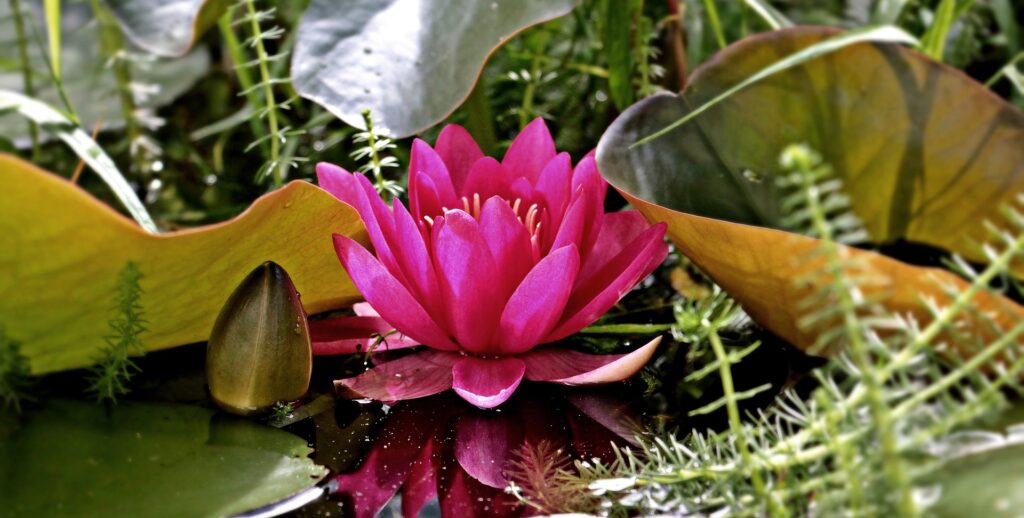
Potential Challenges and Solutions in Maintaining the Ideal Pond Ecosystem
Excessive Algae Blooms
Excessive algae blooms can be a common challenge in pond ecosystems, leading to water quality issues and oxygen depletion. To address this challenge, proper nutrient management, regular monitoring, and the introduction of beneficial aquatic plants or algae-eating organisms can help control algal growth. Implementing aeration systems and reducing nutrient inputs, such as excess fertilizers, can also prevent or mitigate algae blooms.
Aquatic Weed Overgrowth
Aquatic weed overgrowth can negatively impact the balance and health of a pond ecosystem. To manage this challenge, selectively removing or controlling the growth of invasive or nuisance aquatic plants is essential. Physical methods such as hand removal, cutting, or harvesting can be effective for managing weed overgrowth. Introducing herbivorous fish or biological control agents specific to the problem plants can also help control excessive weed growth.
Fish Overpopulation or Depletion
Fish populations can face challenges of overpopulation or depletion in a pond ecosystem. Overstocking can lead to competition for resources, stunted growth, and increased predation. Careful management of fish populations through monitoring, proper stocking densities, and selective harvesting can help maintain a healthy balance. Regular population assessments and adherence to local regulations and guidelines are essential for sustainable fish management.
Water Quality Issues
Water quality issues, such as poor clarity, high levels of pollutants, or oxygen depletion, can arise in pond ecosystems. To address these issues, regular water quality testing and monitoring are crucial for early detection and appropriate corrective measures. Implementing best management practices, such as reducing chemical inputs and promoting efficient nutrient cycling, can help maintain optimal water quality within the pond ecosystem.
Erosion and Sedimentation
Erosion and sedimentation can impact the ecological balance of a pond ecosystem, leading to reduced water quality and habitat degradation. Proper erosion control measures, such as vegetative buffers, sediment traps, or retaining walls, can help reduce the influx of sediment into the pond. Regular maintenance and dredging if necessary can prevent excessive sediment buildup and ensure the long-term health of the ecosystem.
Disease Outbreaks
Disease outbreaks can threaten the health and survival of organisms within a pond ecosystem. To prevent and manage disease outbreaks, regular monitoring, early detection, and quarantine procedures are essential. Maintaining optimal water quality, minimizing stressors, and practicing responsible fish and wildlife handling can help prevent the spread of diseases. Consulting with experts and implementing appropriate management strategies can address and contain disease outbreaks promptly.
Invasive Species Introduction
Invasive species introductions pose a significant threat to the integrity of pond ecosystems. Preventing the introduction of invasive species is crucial and can be achieved through routine inspections, proper quarantine procedures, and responsible gardening practices. Early detection and rapid response to new invasive species are vital for minimizing their impacts on the pond ecosystem. When invasive species are detected, implementing control measures or seeking expert assistance can help manage and eradicate them.
Pollution and Chemical Contamination
Pollution and chemical contamination can have detrimental effects on the health of a pond ecosystem. Preventing pollution and chemical contamination requires responsible management practices. Minimizing the use of chemical inputs, properly disposing of waste, and implementing best management practices for agricultural and urban runoff are crucial steps in preventing pollution. Educating the community about the importance of proper waste management and pollution prevention can help maintain a clean and healthy pond ecosystem.
Tips for Enjoying and Interacting with a Pond Ecosystem
Respecting the Wildlife
When enjoying and interacting with a pond ecosystem, it is important to respect the wildlife and their habitats. Observe from a distance and avoid disturbing or feeding the animals. Do not remove plants, rocks, or other natural features from the pond, as they provide vital habitat and nesting areas for wildlife.
Observing and Documenting Species
Take the opportunity to observe and document the species within the pond ecosystem. Engage in citizen science projects or educational programs that allow you to contribute valuable data and observations. By keeping records and sharing your findings, you can contribute to scientific understanding and conservation efforts.
Educating Others about Pond Conservation
Share your knowledge and passion for pond conservation with others. Educate your friends, family, and community about the importance of maintaining the health of pond ecosystems. Spread awareness about responsible practices, such as proper waste management, avoiding the introduction of invasive species, and minimizing pollutant inputs.
Providing Supplemental Feeding Sustainably
If providing supplemental feeding to the organisms within the pond ecosystem, do so sustainably. Consult with local experts to determine appropriate feeding practices and feed types for the specific species present. Avoid overfeeding, which can lead to nutrient imbalances, excessive waste, and water quality issues.
Maintaining a Safe and Clean Environment
When enjoying and interacting with a pond ecosystem, it is important to maintain a safe and clean environment. Properly dispose of waste and litter, and encourage others to do the same. Clean up after recreational activities and avoid introducing pollutants or chemicals into the water.
Encouraging Responsible Fishing Practices
If fishing is allowed in the pond ecosystem, encourage responsible fishing practices. Follow local regulations and guidelines regarding catch limits, size restrictions, and seasonal restrictions. Practice catch and release whenever possible, and avoid using destructive fishing techniques that could harm the ecosystem or wildlife.
Participating in Citizen Science Projects
Engage in citizen science projects that focus on pond ecosystems. These projects often involve data collection, monitoring, and research aimed at understanding and conserving pond biodiversity. By participating in such initiatives, you can make meaningful contributions to scientific knowledge and conservation efforts.
Exploring Recreational Activities
Take advantage of the recreational opportunities provided by the pond ecosystem. Enjoy fishing, boating, birdwatching, or simply taking a leisurely walk around the pond. Respect any regulations or guidelines in place to protect the ecosystem, and ensure your activities do not harm the wildlife or disturb their habitats.
Engaging in Pond Clean-up Initiatives
Participate in or organize pond cleanup initiatives within your community. Removing litter and debris from the pond environment not only improves the aesthetic value but also helps in maintaining a clean and healthy ecosystem. Organize volunteer groups or participate in organized cleanups to make a positive impact on the pond ecosystem and surrounding areas.
Contributing to Long-Term Preservation Efforts
Support and contribute to long-term preservation efforts for pond ecosystems. Join local environmental organizations, volunteer for restoration projects, or donate to the conservation initiatives focusing on ponds. By actively participating, you can help ensure the continued health and existence of these valuable freshwater habitats.
Case Studies of Successful Pond Ecosystem Management
Restoration of a Polluted Pond
Case studies of successful pond ecosystem management often involve the restoration of polluted ponds. Through concerted efforts to control pollution sources, implement sediment control measures, and restore natural habitats, polluted ponds can be transformed into healthy and thriving ecosystems. Effective management practices, regular monitoring, and community involvement are crucial for successful restoration projects.
Establishment of a Wildlife Sanctuary
Some ponds have been transformed into wildlife sanctuaries through deliberate management practices and habitat improvement efforts. Creating suitable habitats, providing nesting and feeding areas, and implementing protection measures can attract and support diverse species. By designating the pond as a wildlife sanctuary and implementing sustainable management practices, these habitats can become vital refuges for wildlife.
Community Collaboration for Pond Conservation
Successful pond ecosystem management often involves community collaboration and active participation. Engaging local residents, schools, and organizations in conservation efforts through educational programs, restoration projects, or clean-up campaigns can create a sense of stewardship and common responsibility for the pond ecosystem. By working together, communities can achieve long-lasting and sustainable management of pond ecosystems.
Conversion of Ornamental Pond into a Natural Habitat
The conversion of ornamental ponds into natural habitats is a compelling case study in pond ecosystem management. By removing non-native species, introducing native plants and animals, and creating suitable habitats, ornamental ponds can be transformed into ecologically valuable ecosystems. These conversions contribute to biodiversity conservation, provide educational opportunities, and enhance the ecological functioning of the landscape.
What Is The Ideal Pond Ecosystem
There is a great deal of information above to think about, and all of it will lead you to a pond that is ideal for both the fish and environment. We have some other great fish pond information available, such as ‘Is It Hard To Maintain A Fish Pond‘, please take a look.
